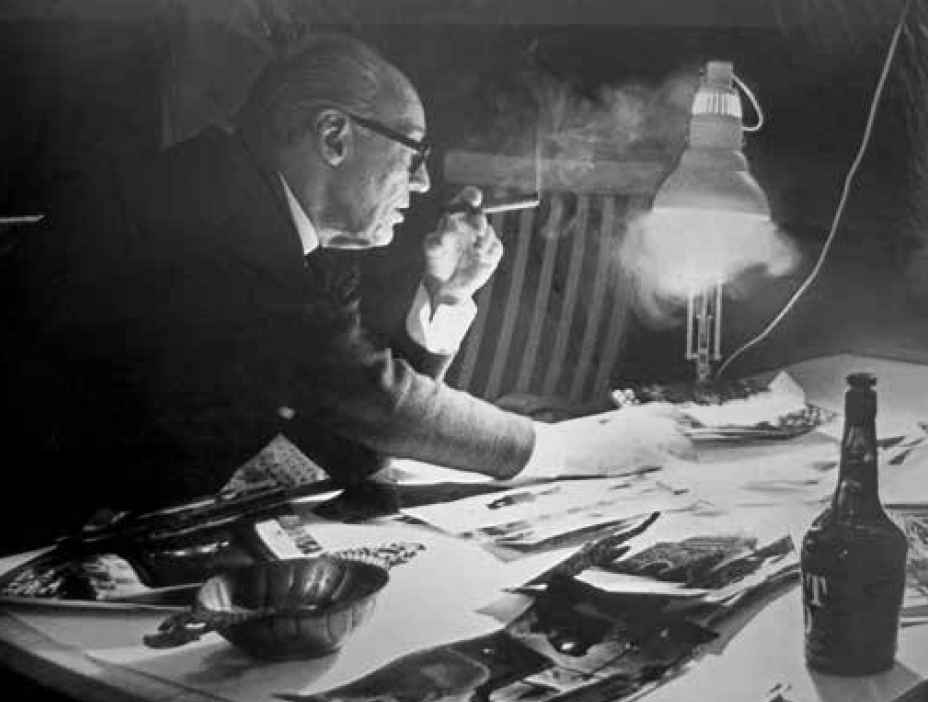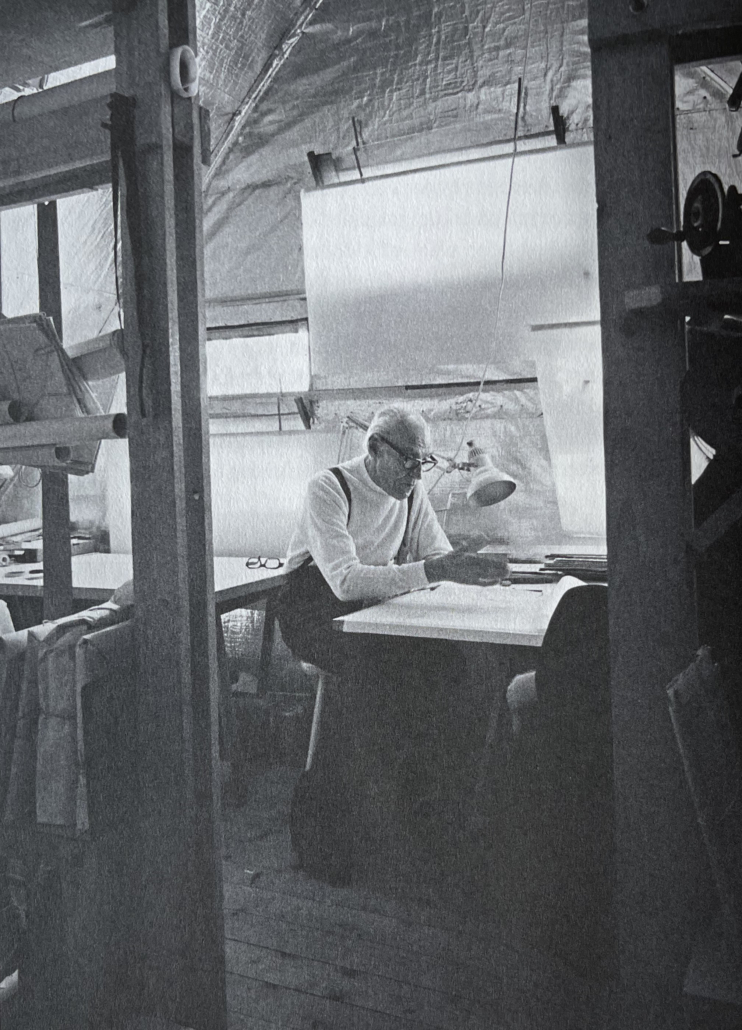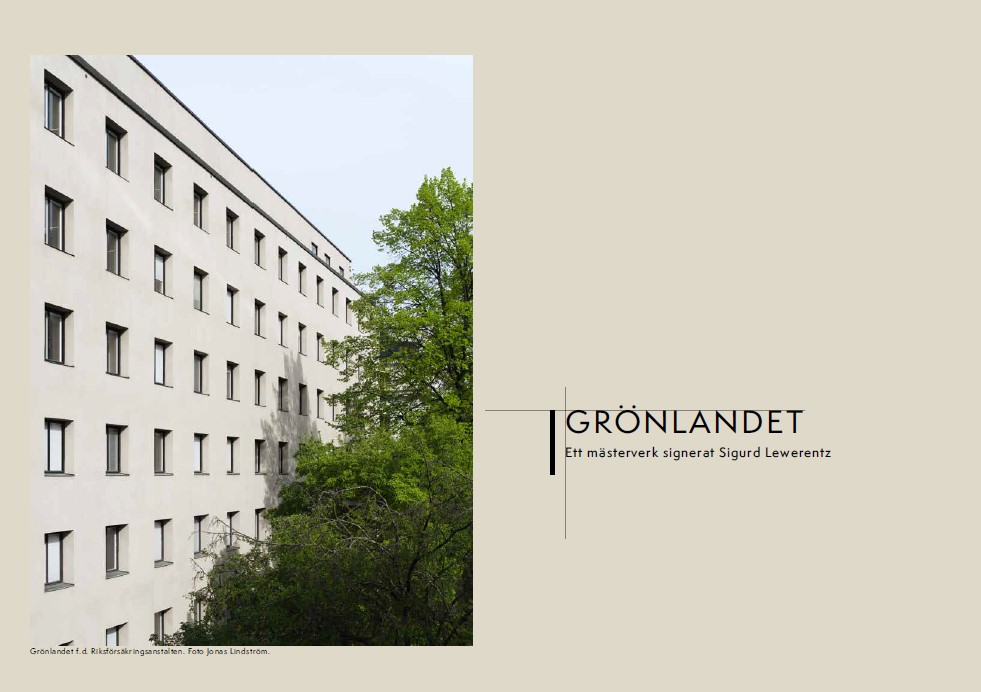WE ARE
Fastighetsaktiebolaget Grönlandet Södra 13 is a privately owned company with one very special responsibility: the care and preservation of a single cultural treasure in Stockholm. At the heart of the city stands Grönlandet, completed in 1932 by the acclaimed Swedish architect Sigurd Lewerentz. Recognised as a culturally protected building and listed under the Cultural Environment Act since 1992, it is regarded as one of his masterpieces. Grönlandet is more than a historic landmark—it is a living workplace. Today, it houses a community of tenants alongside our own office, where daily life unfolds within the architect’s distinctive and enduring design. Our mission is twofold: to make Grönlandet a modern, functional and inspiring place to work, while at the same time safeguarding its architectural legacy for future generations. Caring for this single cultural building is both our privilege and our responsibility.
Sigurd Lewerentz – A Relentless Individualist in Swedish Architecture
Sigurd Lewerentz is one of Sweden’s most internationally renowned architects. He studied architecture at the Royal Institute of Technology in Stockholm, graduating in 1915, and went on to develop a career that spanned more than six decades. In 1928, he won the competition to design a new headquarters for Riksförsäkringsanstalten (the former National Insurance Institute). Completed in 1932, the building is considered one of the most important works of Swedish modernism, widely admired for its precision, restraint, and uncompromising attention to detail.
Lewerentz’s career bridged a remarkable range of styles. From the early influences of national romanticism around 1910, through 1920s classicism, 1930s functionalism, and the brick architecture that reappeared after the Second World War, he consistently carved out his own path. By the later decades of his life, his work anticipated the raw, expressive use of béton brut. Yet style, for Lewerentz, was never the point—his wilfulness and artistic depth meant he pursued architecture on his own terms.
This independence was both his strength and his burden. Known for his stubborn and introverted character, he sometimes clashed with clients and never ran a large architectural office. In the 1940s, he partly withdrew from practice to run a window factory in Eskilstuna, before returning to produce some of his most profound works, including St. Mark’s Church in Björkhagen and St. Petri Church in Klippan.
Away from public life, Lewerentz lived quietly with his wife, Elna, to whom he was married for many years. Reserved and private, he devoted himself to his craft rather than the spotlight. Today, his architecture—marked by honesty of material, rigorous precision, and an almost spiritual simplicity—stands as one of the cornerstones of 20th-century Scandinavian design.
His work, defined by material honesty and spiritual simplicity, remains a cornerstone of modern Scandinavian design

Sigurd Lewerentz 1885-1975

Lewerentz in his studio The black box

Read and see more in greater detail
STUDIO
With a background in architectural studios, we have expanded our practice beyond managing the cultural heritage property and tenants to also taking on interior design commissions, primarily for office spaces.
THE BUILDING IN BALANCE
Grönlandet has long been cared for with a focus on both its heritage and its daily use. Today, this approach includes everything from the energy-efficient systems that maintain the building, to the careful selection of furniture and materials, and even the food served in our café. Heat is recovered, ventilation is optimised, lighting is entirely LED, and green electricity powers the property.
Food waste is transformed into compost in 24 hours, leftover fruit is reused, and Mondays are celebrated with plant-based menus. Our small beehive and pollinating plants produce a limited edition of honey each year, while tenants enjoy free ecological coffee, tea, milk and fruit. Recycling is available on all floors, and furniture is preserved and updated with preloved items whenever possible.
At Grönlandet, caring for the building and its community is an ongoing practice — a balance between heritage and modern life.
Architecture was a pursuit of Lewerentz’s own uncompromising vision
